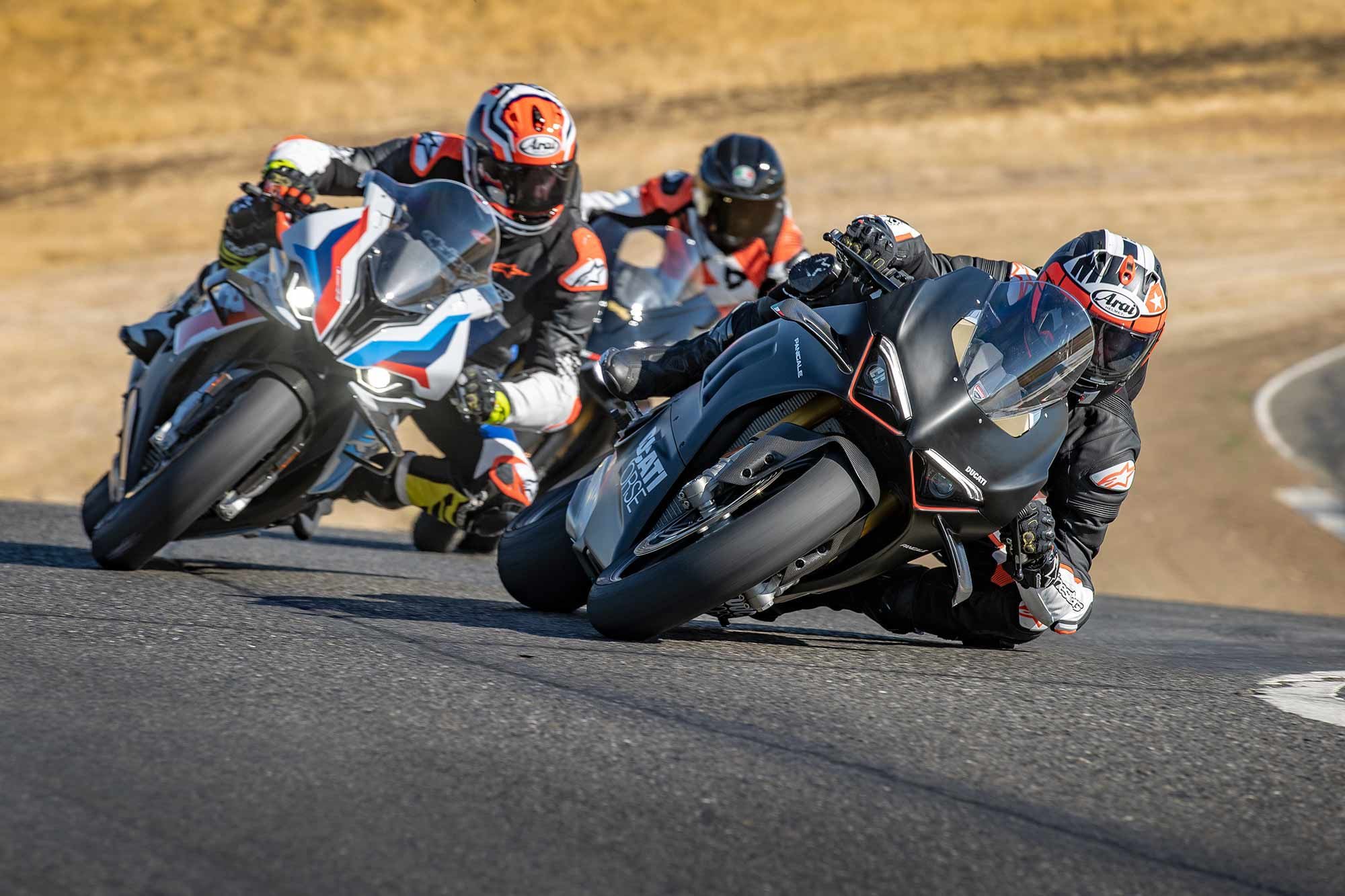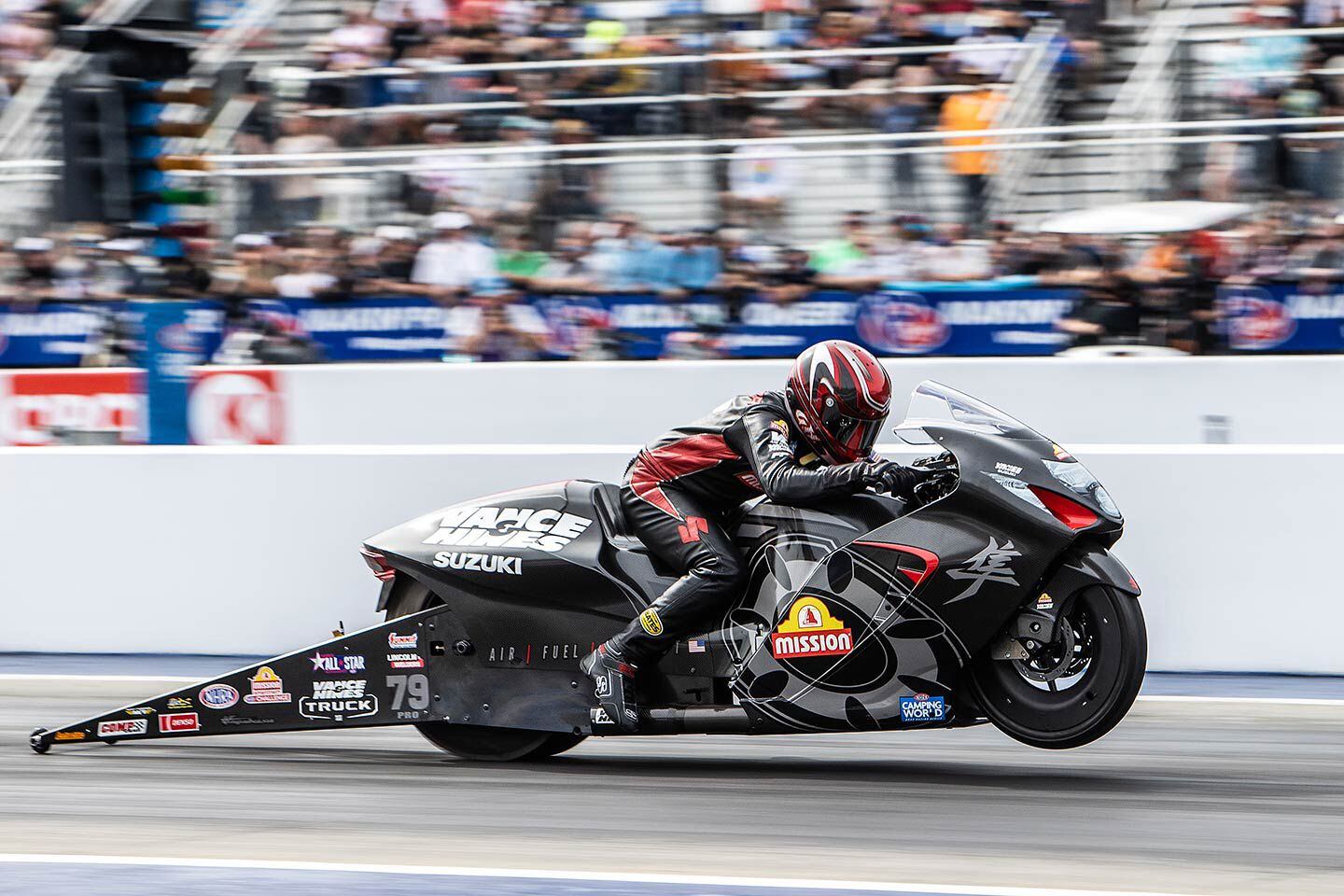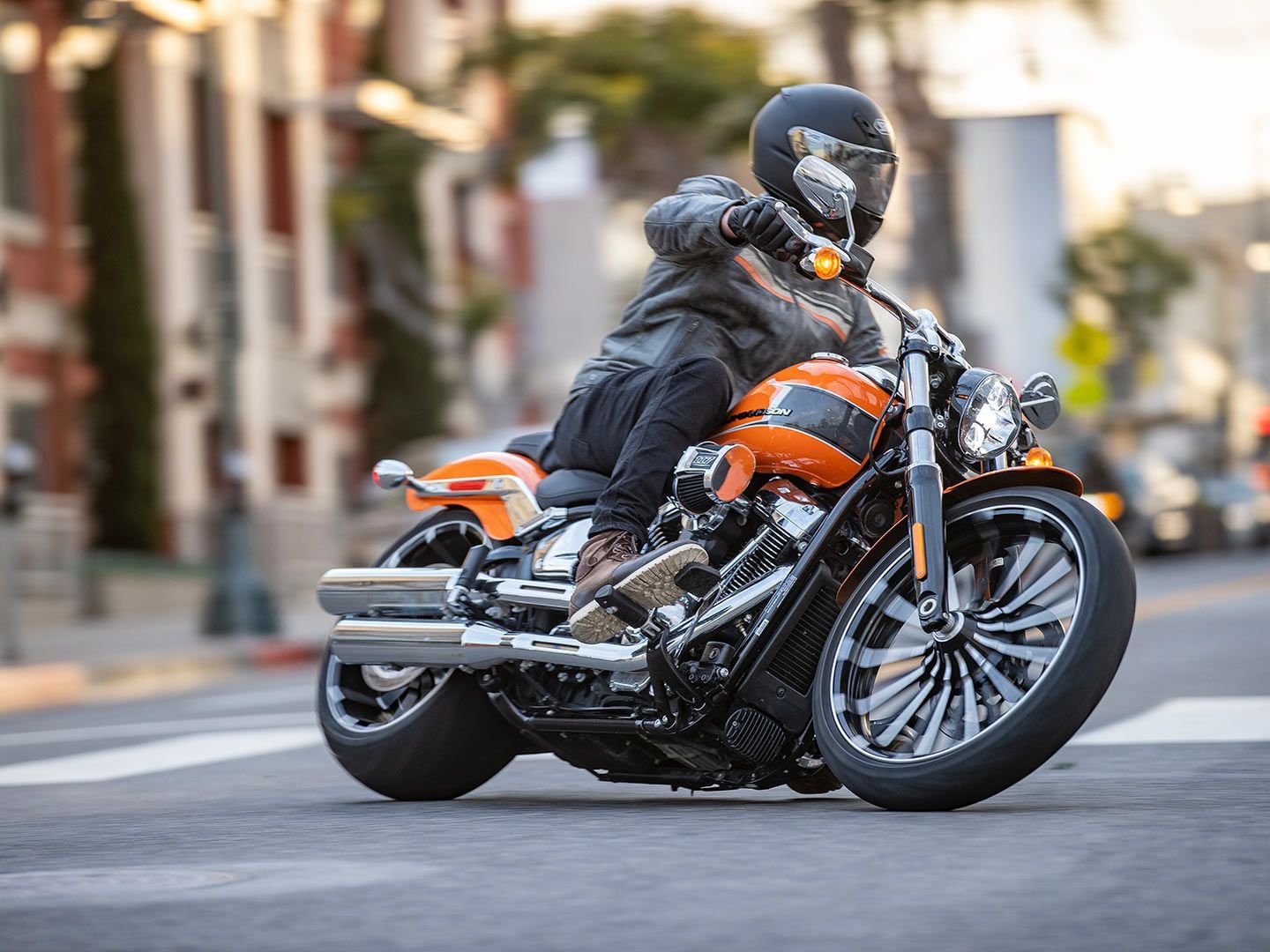
[ad_1]

As a result of bikes are constructed for a lot of purposes—touring, cruising, sport, and off-road—bike dealing with should in every case ship the sort of efficiency riders in that self-discipline want.
A technique of bike dealing with is to think about stability versus management response. The sporting rider, wanting a extremely responsive machine, quickly discovers that response cuts two methods. A motorbike designed to reply promptly to the rider’s management inputs will reply simply as promptly to different disturbances, comparable to bumps within the street or crossing railroad tracks at an angle.
The touring rider traversing the nice flat states of Nebraska or Kansas, with the sound system taking part in favourite tunes, doesn’t need to be consistently correcting. That bike’s wheelbase will probably be longer, offering room for rider, passenger, and baggage with out crowding. Wheelbase can also be the lever or “tiller” by which steering the entrance wheel swings the rear to a brand new heading. The longer the wheelbase, the extra slowly a steering enter on the bars (or the impact of any unintentional disturbance) turns into a whole-vehicle change of course.

Measure touring bike wheelbases and also you’ll discover numbers round 65 inches.
The sporting rider, being extra entertained by curves and modifications of course, desires faster steering and course altering as a result of in that method, maneuvers eat up much less time and distance, and there’s a tighter connection between trigger and impact. Wheelbase is subsequently made shorter. Stanley Woods, one of many nice roadracers of the between-the-wars interval 1919–1939, favored finest a wheelbase of 52 inches. Giacomo Agostini within the Sixties, using MV Agusta manufacturing unit bikes, favored 53.5 inches. And as we speak, racers in Superbike and MotoGP are most frequently on 56 inches.
Why the pattern towards longer? As engines progressed from the 40 hp of the mid-Thirties to double that within the late Sixties, increasingly time may probably be wasted in wheelies. Higher to increase the wheelbase a bit to make use of extra of that skill to speed up.
Evaluating MX and other off-road designs with these of fifty years in the past is a shock. Again when suspension journey averaged 3–4 inches, MX bikes may afford a brief wheelbase in return for faster steering. However now that bikes with 8–12 inches of suspension journey are so tall—and far quicker throughout our planet’s undulations—wheelbase has needed to develop so as to maintain the entrance wheel on the bottom no less than sometimes.
Longest of all wheelbases are these of dragsters, that are from 65 inches upward—once more, to show horsepower into acceleration somewhat than waste it in wheelies.

The place does the engine belong within the body? Ahead? Again in opposition to the rear tire, “for traction” as designers of the Nineteen Fifties claimed? Increased? Decrease? A while within the early Sixties got here a chunk of analysis revealed by the Japan Society of Mechanical Engineers (JSME), relating stability to engine place. Their conclusion, based mostly on testing on a motor-driven synthetic belt roadway? Transfer the engine ahead for stability.
Immediately, take a look at most sorts of bikes and see that follow and concept agree. There are Honda’s Gold Wing and Harley-Davidson’s grand tourers, each with engines properly ahead (OK, a part of the reason being to get them out from underfoot!).
The identical is true of sport and racing pavement bikes; what use is elevated engine energy if the key result’s wheelies that consistently intrude with management? Shifting the engine ahead makes wheelies much less frequent and fewer sudden.
The massive exception right here is dirt-trackers. Once I first noticed a traditional Harley XR-750 up shut, I may see that its entrance and rear wheels have been basically pushed as near the V-twin engine as potential, implying the shorter the wheelbase, the higher.
Touring and cruising bikes have their engines set so low that 30–32 levels of lean in cornering are about all she wrote (any extra and brilliant sparks stream from laborious components hitting the pavement). Riders must have the burden of these engines set as little as potential to allow them to confidently handle it when stopped at a lightweight or maneuvering at low velocity. The upper the engine, the more severe the sensation that “I’ve gotta watch it or this factor will pin me to the pavement.” Likewise for the very low seat peak—as little as 24 inches; it lets the rider plant his or her ft firmly on the bottom to handle that weight.

Sport and racing bikes, their efficiency dependent as it’s on speedy roll response, must centralize their main lots (engine, rider, gas). This makes the bike act extra like a 24-pound cannonball than like a 24-pound ladder when responding to forces making an attempt to vary its orientation. Mass centralization lies on the coronary heart of fast response.
100 twenty-five years of tire and rubber improvement has given us fabulously grippy tires, however so as to use that grip to the complete we want cornering clearance (the power to lean bikes to great angles) as nice as 63 levels from vertical, within the case of racing slicks on good pavement. That too requires engines set fairly excessive within the chassis, and made as slender as potential (which is a part of the explanation why the cam drives of in-line four-cylinder engines have been moved from the middle of the crankshaft to at least one finish; it allowed deleting the additional width of one of many six most important bearings previously used).
One other matter is steering geometry, which refers to 2 numbers:
- The angle at which the steering axis is ready to the vertical (the <a href=”https://www.cycleworld.com/2015/05/22/cycle-world-tips-and-tricks-understanding-motorcycle-rake-and-trail/”>rake</a> angle)
- The gap by which the middle of the entrance tire’s footprint trails behind the projection of the steering axis onto the pavement (the <a href=”https://www.cycleworld.com/blogs/ask-kevin/what-is-motorcycle-trail-explained/”>path</a>).
Again within the Seventies rake angles for pavement sport and racing bikes have been within the vary of 27–31 levels. A superb purpose for these numbers (unfashionably massive as we speak) was the higher common flexibility of the metal tube chassis of that point. The extra flexy the chassis is, the extra weak it’s to instability, requiring extra steady steering geometry to make it behave.
As stiffer chassis and forks got here into use within the Nineteen Eighties, smaller rake angles and considerably shorter trails grew to become usable. Immediately’s sportbikes have rakes within the neighborhood of 23.5 to 24.5 levels, with trails within the vary of three.75 to 4.0 inches. Due to this, older bikes with rakes up round 30 levels look decidedly classic to me!
One other factor to say in regard to chassis stiffness is steering delay. Years in the past CW’s former resident off-road editor Jimmy Lewis described using two makes of 125 dust bikes with almost an identical rake and path. But, he mentioned, considered one of them delivered right-now steering whereas the opposite was sluggish. Evaluate the fork and bars on a 60-year-old Triumph 650 with considered one of as we speak’s middleweights. You could possibly maintain the Triumph’s entrance wheel between your knees and switch the bars by means of scary massive angles. Immediately’s bikes have no less than two decrease crown pinch-bolts per fork leg, and perhaps three—these new entrance ends don’t budge if you apply the above take a look at. The Triumph, having a high-vibes parallel-twin engine, was given squidgy rubber-mounted bars that added much more steering vagueness.
Backside line? The extra flexible stuff there may be between your palms and the entrance tire, the much less responsive your experience will really feel.
The aesthetics of the chopper motion glorified massive rake angles up round 35 levels or much more. They in all probability originated within the massive rakes discovered within the Nineteen Fifties to offer good stability at Bonneville or on the dragstrip. Often a stylist as we speak will “go for the look” by angling the fork legs greater than the steering stem, thereby combining a bygone look with fairly trendy steering.
[ad_2]
this Article is Supply FromSource link






